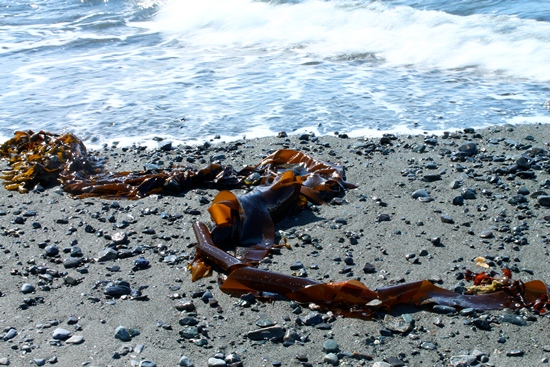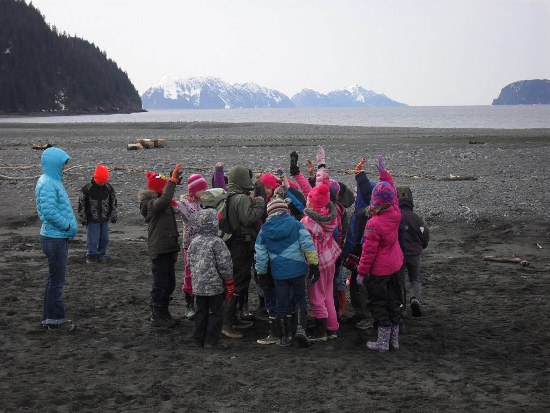
Photo: Max Odland
Last week marked a big departure from my first two weeks at Kenai Fjords; I started actually leading lessons. Thus far, I've mainly been learning the ropes around the office, occasionally shadowing the education rangers while they give programs, or helping with park-related arts projects in Seward Elementary School for National Park Week while the road into the park itself is impassible under three feet of snow.
But last Monday and Tuesday, I dove into leading programs headfirst with a beach ecology lesson for local first and second graders. Normally, CJ, my supervisor, would have had me shadow another ranger through a lesson before asking me to lead it myself, but this one was brand new for all of us, so we all gave it for the first time on the same day.
A note on leading a group of first and second graders around for an hour on the beach: Things don't really go according to plan. We got to the beach and broke up into three groups, giving the same(ish) lesson about 100 meters apart. So far so good. But it quickly became obvious that our careful planning about how long to spend on each location and activity wasn't a very good reflection of reality. With different groups of young'uns, each of the rangers had to go at their own pace to keep the kids engaged, and keeping close track of the minutes was out of the question. Instead, it turned into a loose game of follow the leader; I would stop to talk about plankton, or the intertidal zone, or this really cool sea snail that one of the kids found until I saw the group in front of me moving on to the next activity. Then I knew it was time to bring my group together for a wrap up and transition to the next part of the beach.
Another thing: I have a bachelor's degree in biology, and ecology is full of concepts that still make my head whirl for a good long while before I really understand them. Explaining ecology to first and second graders, then, is a unique challenge. We did our best to pick only the concepts that are most fundamental to understanding ecosystems, such as living vs. non-living things, and how living things need non-living things and other living things to survive. Still, it was a little bit much for an hour-long program and some of it ended up going over the kids' heads.

Photo: NPS / CJ Rea
